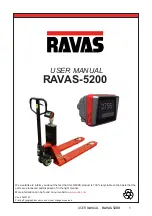
CLUTCHES AND TRANSMISSIONS 7-16
The required operations will be obvious upon visual
inspection of the vehicle. The instructions contained
It is important to note that vehicles covered by this
section will have either an “ Apron” or “ S.A.E. #2”
type flywheel housing as shown in Figure
“ Apron” type flywheel housing is easily identified by the
clutch housing.
The “ S.A.E. #2” type flywheel housing completely
surrounds the flywheel. A separate clutch housing is
10.
used in addition to the flywheel housing. Transmission
replacement procedures are different for each type fly
wheel housing used.
11
.
R e m o v a l
1. On transmissions equipped with remote controls,
^
disconnect
control r o d s from shift levers at
transmission.
2. On transmissions having a conventional gearshift
lever, remove floor mat, remove transmission floor
pan cover, and then place gearshift lever in “ NEU
TR A L ” position. Remove gearshift lever and control
tower assembly f r o m transmission, e x c e p t on
models
equipped
with New Process or RT510
transmission.
Drain lubricant from transmission.
Disconnect speedometer cable from transmission
adapter.
Disconnect clutch control linkage.
Disconnect and remove parking brake lever and
controls (if used).
Disconnect propeller shaft from transmission as
described in “ PROPELLER SHAFTS” (Section 4) of
this manual.
Remove engine ground strap and battery cable sup
port clip i f attached to transmission o r clutch
housing.
If vehicle is equipped with power take-off, remove
unit and controls from transmission. Place protec
tive covering over opening.
On vehicles equipped with RT510 transmission, dis
connect air-intake line from air filter on transmis
sion.
Place protective covering o v e r air filter
opening to prevent entry of dirt.
Position a suitable dolly or jack under vehicle and
adjust to carry weight of transmission.
NOTE:
On vehicles which have the rear engine
mountings attached to the clutch housing (except
models equipped with “ Apron” type flywheel
housing), position a suitable dolly jack under the
flywheel housing and adjust to carry the weight
of the engine.
Remove rear engine mounts.
NOTE:
On conventional cab models with New
Process transmission, remove gearshift lever
using Tool (J-8109) as shown in Figure 1C.
Press down firm ly on tool and rotate counter
clockwise to release gearshift lever.
On conventional cab models with RT510 trans
mission, bleed air tanks, then remove range
shift control lines at air valve on transmission.
Remove gearshift lever and control tower as
sembly from transmission.
Place protective
plugs or tape over air valve openings to prevent
entry of dirt.
Place clean lint-free cloth or other suitable cover
ing over opening at top of transmission to prevent
entry of dirt or other foreign material.
“ APRON” TYPE
FLYWHEEL HOUSING
“ SAE
# 2 ”
TYPE
FLYWHEEL HOUSING
“APRON” TYPE
“ SAE # 2 ” TYPE
F ig . 6 C —Flyw heel Housing Iden tification
13. Remove bolts attaching transmission to rear cross
member support brackets (when used).
14. Visually inspect to determine if other equipment,
lines or brackets must be removed to permit re
moval of the transmission.
15. Remove clutch housing-to-engine flywheel housing
mounting bolts, except on models with “ Apron” type
flywheel housing.
NOTE:
On models equipped with “ Apron” type
flywheel housing, remove flywheel housing pan
and transmission-to-flywheel housing mounting
bolts. Be sure to support the clutch release
bearing and support assembly during removal
of the transmission from the flywheel housing.
This will prevent the bearing and support as
sembly from falling-out of the flywheel housing
when the transmission is removed.
16. Move the transmission assembly straight away from
the engine, using care to keep the transmission main
drive gear shaft in alignment with the clutch disc
hub.
IM PORTANT:
When removing the transmis
sion, do not allow weight of the transmission to
hang on clutch disc hub, as disc will become
distorted, seriously affecting clutch operation.
17. When transmission is free from engine, lower the
transmission and move from under the vehicle.
18. If desired, a careful check of clutch components
should be made after the transmission has been r e
moved. If the clutch requires repair, r e f e r to
“ CLUTCHES” in this manual before transmission is
reinstalled in the vehicle.
CHEVROLET TRUCK SERVICE MANUAL
Summary of Contents for 10 Series 1968
Page 1: ...ST 1 3 3 SB...
Page 3: ...w w...
Page 52: ...HEATER AND AIR CONDITIONING 1A 21 Fig 32 Charging Schematic CHEVROLET TRUCK SERVICE MANUAL...
Page 67: ......
Page 128: ...BODY IB 61 Fig 135 A uxiliary Seat CHEVROLET TRUCK SERVICE MANUAL...
Page 132: ...Fig 4 1 0 3 0 Series Truck Frame...
Page 133: ...Fig 5 4 0 6 0 Single A xle Truck Frame E x c Tilt Cab...
Page 135: ...Fig 7 4 0 6 0 Series Tilt Cab Truck Frames...
Page 139: ...w...
Page 169: ...fit w...
Page 233: ...I...
Page 248: ...BRAKES 5 15 TD 50 60 Fig 26 Parking Brake Cables T Models CHEVROLET TRUCK SERVICE MANUAL...
Page 347: ......
Page 389: ......
Page 393: ......
Page 411: ...ENGINE FUEL 6M 18 Fig 18A V 8 Typical CHEVROLET TRUCK SERVICE MANUAL...
Page 525: ......
Page 551: ......
Page 583: ...CHASSIS SHEET METAL 11 12 Fig 20 Designation and Name Plate CHEVROLET TRUCK SERVICE MANUAL...
Page 587: ...ELECTRICAL BODY AND CHASSIS 12 2 Fig 1 Fuse Panel CHEVROLET TRUCK SERVICE MANUAL...
Page 611: ...r ELECTRICAL BODY AND CHASSIS 12 26 9 CHEVROLET TRUCK SERVICE MANUAL...
Page 663: ......
Page 686: ...w...
Page 698: ...SPECIFICATIONS 12 ENGINE TORQUES CHEVROLET TRUCK SERVICE MANUAL...
Page 713: ...9...





































